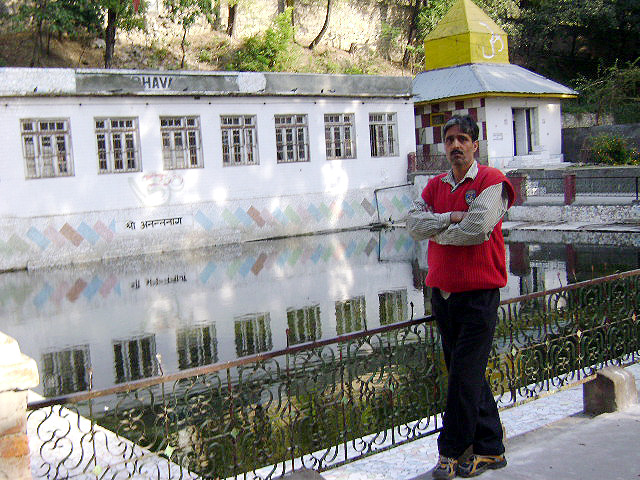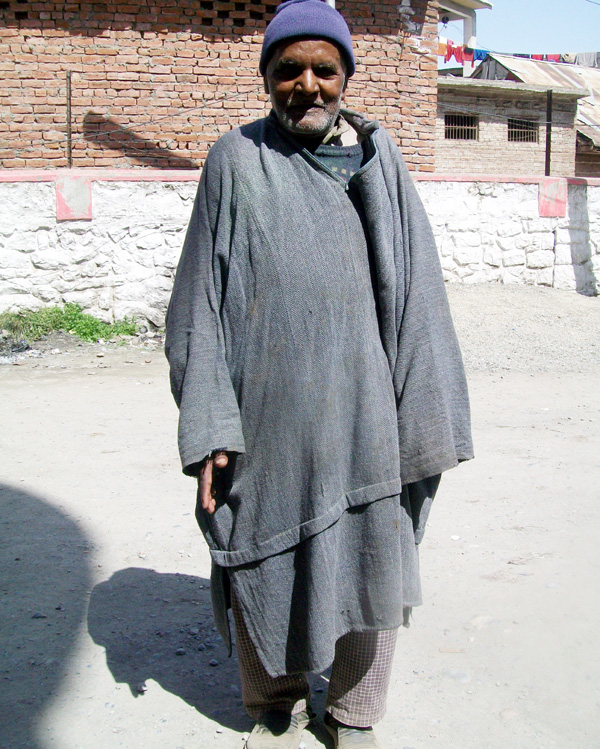Forgotten Temples of Kashmir
Photo series Part-20 An effort to preserve and record Hindu cultural and religios heritage of Kashmir NAGBAL.....ANANTNAG 
Exclusive images and report from a remote village in Kashmir provided for Shehjarby Chander M. Bhat |
According to ancient mythological stories, the name Anant Nag is given to the place because Lord Shiva during his journey to Amarnath cave left all his valuables on the way and Anant Nag was the place where he is supposed to have left countless number of serpents residing on him. Anant nag is also well mentioned in ancient Naga and Pichash chronicles of ancient aboriginals of the valley. It was also known as Kashyapteshwara in ancient times linking it to the mythology of Kashyap Reshi. In ancient times, it was called the Inder Nag. Anant also means numerous in the Sanskrit language and Naga means springs in the Kashmiri language. Thus Anantnag is believed to mean numerous springs because here are many springs including Nagbal, Salak Nag and Malik Nag in the town. Thus every part of Anantnag town resides on a crest of water. Few feet depth brings water to the surface. Anantnag is a perfect Vastu Shastra location by nature. On one side is a hillock releasing endless water from its feet. Localities are thus blessed with this perfect Vastu creation of nature. The name of Anantnag District according to a well known archaeologist, Sir A. Stein, comes from the great spring Anant Naga issuing at the centre of the city. This is also corroborated by almost all local historians including Kalhana according to whom the city has taken the name of this great spring of Cesha or Anant Naga land of countless springs. The spring is mentioned in Neelmat Puran as a sacred place for the Hindus and Koshur Encyclopaedia testifies it. Mendi Kadal, one of the localities of Anantnag town was famous for magic waters that cured leprosy patients. Anantnag town was a transit camp for Amarnath Pilgrims in olden days. The town of Anantnag is constituted by three main boroughs or towns viz. Anantnag, Khanabal and Mattan. The old city of Anantnag comprises Nagbal, Maliknag, Kadipora, Cheeni Chowk, Doni Pawa, Sarnal Bala, Janglatmandi, Old Port Khanabal, Downtown Martand and Dangarpora areas and few villages like Haji Danter, Mir Danter etc. About 1200 households of Kashmiri Pandits were living in Anantnag town and almost entire community joined in mass exodus during 1990. Most of the Kashmiri Pandit community were either in Government Service or had their own business establishments in the town. Noted Kashmiri Pandits from Anantnag who made their name on national scene were Sh. Piarey Lal Handoo, Sh Prem Nath Bhat, Dr. A.N. Safaya etc. Chirvi’s, Zutshi’s, Goja’s, Jad’s and Guzerwan’s were noted business families in the town. Anantnag is centre seat of Maraz segment of Kashmir and its language culture is unique in comparison to other segments of Kashmir Valley. It was a land locked place from Verinag...Kokernag belt and from Qazigund...Shopian belt. This advantageous position left lesser impact on its culture by Huns, Kushans and Afghans. Near Anantnag three streams namely Arapath, [the glacier waters from Mrigin Mountain and streamlets from springs of Chahaer and Brahmasar form Aripat] Bringi [Bringi freshet is formed by the glacier waters from the Hokhsar Mountain and various other streams from Springs of Navbhug and Kokernag] and Sandran [the glacier waters from Brari Mountain and streams from Verinag and other springs of Shahabad from Sandran] confluence together and mingles with Veyth. Another stream Liddar [Lamboodri] also joins the flow with them at a little distance downstream further ahead. The Nagbal temple is in the eastern corner of the Anantnag town, placed adjacent to a spring. There are long shady Chinar trees that stand sentinel round the tank. The presiding deity of the Nagbal temple is Lord Ananta Bhawan set up at the outlet of the spring. The temple was built by Maharaja Ranbir Singh, the 2nd Dogra ruler of Kashmir. There are also other smaller temples in the temple complex. Shiva temple, the oldest temple, was built during the reign of Maharaja Partap Singh. A sulphur spring, which is believed to possess spiritual power, is also located in the temple complex. Nagbal is bounded by incredible beauty. The holy spring which originates from here and the formation of which is attributed to Vishno or Narayana is said to be a Vedic pilgrimage centre. The spring rises beautifully from the foot of a small hill-lock and is dedicated to the worship of Ananta or Vishno. Annual festival is held on beuuderpeth gat’iu pachh tsodah. The shrine of Reshi Mol Sahib is situated in the centre of the Anantnag town and is at a stone’s throw distance from Nagbal and famous Devibal Shrine is also located nearby. Devibal, a small stone temple is located near Nagbal Temple complex and is dedicated to the Mata Ragnya. Inside the temple is the sanctum sanctorum, which is about 12 square feet in size, in the middle of which is 6 square feet holy spring. The Ragnya is said to have blessed the spring. According to a legend, Wazir Pannu, who was a minister during Dogra rule, had a dream in which the goddess revealed to him the secret of her presence in the holy spring and left it to the care of Pandit Balkak, a priest. Maharaja Pratap Singh used to visit the shrine during his travel from Jammu to Srinagar or back, pray and make offerings. He is also believed to have donated land to the shrine. You may come down from land of shepherds or from the land of modernity, the smooth transition from one site to this site; creates a unique experience of soul purification as clay of Anantnag has touched the feet of Lord Shiva and graced by Mata Ragnya. A stay at Anantnag is a saga of memory for anyone who descends on it. |

Entrance Gate. 
Sign Board at the entrance |

Shiv Lingam with faces |

|

|

Nag at Anantnag |

Close up of Nag |

|

|

|


Sulphur Spring 
Author inside Temple Complex 
Articlle bu Sh ddddd |
Saturday, June 9, 2012
NAGBAL.....ANANTNAG
Subscribe to:
Post Comments (Atom)

No comments:
Post a Comment